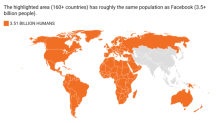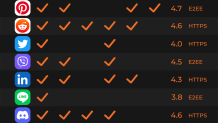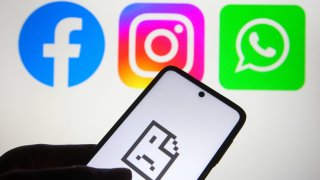More than 3.5 billion people lost their connection to their social networks when Facebook’s portfolio of apps went down October 4, 2021.
The combined reach of Facebook (2.797 billion people), WhatsApp (2 billion), Messenger (1.3 billion), and Instagram (1.287 billion) covers most of the global online population (4.72 billion). Facebook’s numbers alone account for 35% of all living humans while WhatsApp is used by a quarter of human civilization.
If you’re counting, that’s equal to every person in Africa, Australia & Oceania, Europe, the Middle East, and the entire Western Hemisphere.

The outage had a significant impact on small businesses in the U.S. The day after the outage, Kevin O’Leary, chairman at O’Shares ETF and a regular host on "Shark Tank," explained the domestic financial impact on CNBC’s The Exchange.
“The truth is that Facebook runs small business in America. More than 50 cents of every dollar is spent on small business, which is about 66% of the economy and two-thirds of where jobs are created in America.”
Small businesses rely on Facebook, Instagram and WhatsApp for local advertising and customer engagement. The platform’s native tools simplify the ad process for business owners by plugging in real-world user data, which gives marketers valuable perspective on who they’re reaching. Other platforms have recently moved into e-commerce following Facebook’s success. Pinterest has small business tools and allows users to build boards with shoppable links. Twitter has tested a Shop Module, which would allow direct sales on the platform, and YouTube allows merchants to add a Store page to their channel. But combined, these platforms reach around a billion fewer people than Facebook.
There’s another story on the social side. Some of Facebook’s U.S. population has shifted to other platforms in the last five years, primarily along generational lines.
According to The Infinite Dial 2021, by Edison Research, Facebook’s apps are used by:
- 58% of social media users between the ages of 12 and 34
- 77% of users between 35 and 54
- 80% of users 55 and older
The report shows growth on platforms like Snapchat and TikTok totaling 29% of users under 35. For older adults those apps reach 6% of users, and in the oldest demographic, just 2%.
Recent headlines about Facebook being less than totally honest about data tracking, privacy, mental health warnings and censorship have likely pushed some users to emerging platforms like Telegram and Signal. It’s not clear whether those platforms offer a better or safer experience, but what they don’t offer is the negative baggage Facebook brings to the conversation.
I know a lot of people who have left Facebook over the last few years, and most of the hesitation reduces down to FOMO (which can’t be healthy). I was one of those people who thought the platform was too popular to leave; that my family would leave me in self-exile — which after you think about it, is idiotic. Maybe it isn’t. Not all families are the same.
So if you’re a regular person who’s over the drama and ready to break up with Facebook, and you’re unsure which platforms offer what, I got you. Below is a handy guide to how the features currently stack up on popular social apps along with their average rating (Apple App Store + Google Play Store) and the type of security offered.
Feel free to share this infographic with anyone you know currently looking for the strength to dump FB.



